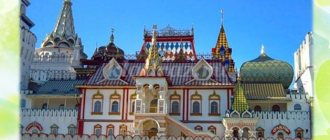Research work on the creativity of S.A. Yesenina
Municipal educational institution
Vladimir Secondary School
Research work on the works of Sergei Aleksandrovich Yesenin
Completed by: 11th grade student
Dikushnikova Elena
2019
Sergei Alexandrovich Yesenin
(1895 – 1925)
Born in the village of Konstantinovo, Ryazan province, into a peasant family. From an early age, he was raised by his maternal grandfather, an enterprising and wealthy man, an expert in church books. He graduated from a four-year rural school, then from a church teacher's school in Spas-Klepiki. In 1912 Yesenin moved to Moscow, where his father worked for a merchant. He worked in a printing house, joined the literary and musical circle named after Surikov, and attended lectures at the Shanyavsky People's University.
Yesenin's poems first appeared in Moscow magazines in 1914. In 1915, he went to Petrograd, where he met A. Blok, S. Gorodetsky, N. Klyuchev and other poets. The first collection of his poems, “Radunitsa,” will be published soon. He collaborated in Socialist Revolutionary magazines, publishing in them the poems “Transfiguration”, “Octoechos”, “Inonia”.
In March 1918, the Poet again settled in Moscow, where he became one of the founders of a group of imagists. In 1919 – 1921 traveled a lot (Solovki, Murmansk, Caucasus, Crimea). He worked on the dramatic poem “Pugachev” in the spring of 1921. He went to the Orenburg steppes and reached Tashkent.
In 1922 -1923 Together with the American dancer A. Duncan, who lived in Moscow, who became Yesenin’s wife, he visited Germany, France, Italy, Belgium, Canada and the USA. In 1924 – 1925 visited Georgia and Azerbaijan three times, worked there with great enthusiasm and created “The Poem of the Twenty-Six,” “Anna Snegina,” and “Persian Motifs.”
The October Revolution gave Yesenin's voice amazing power. In his work he expressed the spring joy of liberation and the impulse towards the future, and the tragic collisions of a turning point.
Yesenin's best works vividly captured the spiritual beauty of the Russian person. Recognized as a most subtle lyricist, a wizard of the Russian landscape. Tragically died in 1925 in Leningrad. According to the version accepted by most biographers of the poet, Yesenin, in a state of depression, committed suicide (hanged himself). For a long time, no other versions of the event were expressed, but at the end of the 20th century, versions began to arise about the murder of the poet, followed by the staging of his suicide; both the personal life of the poet and his
creation.
Collection "Radunitsa".
The book summed up Yesenin's early poetic experiments. It is heterogeneous in its composition and reflects not only various ideological and creative influences, but also the poet’s persistent desire to find his unique voice. Despite all the unequal value of the works, “Radunitsa” nevertheless consolidated the poet’s first success, demonstrated his great talent even more clearly, but, unfortunately, did not clarify the author’s civic position. The ideological uncertainty characteristic of early Yesenin was fully preserved in this collection, for which, one must think, he selected the best poems in his opinion.
The first part of “Radunitsa” consisted of works collected under the general title “Rus”, the second - works entitled “Poppy Baskets”. Let us note, by the way, that the poet did not include in the book the poems that he sent to Grisha Panfilov from Moscow, as well as the poems “That Poet Who Destroys Enemies”, “Blacksmith” and the lyrical suite “Rus”, published in the journal “Northern Notes” No. 7-8 for 1915.
Content
1.Rus
- "Mikola"
- "Enoch"
- "Kaliki"
- "The clouds do not melt with a stormy wind"
- “The evening is smoking, the cat is dozing on the beam...”
- “Go you, Rus', my dear...”,
- "Mantises"
- "Wake"
- “The Lord came to torture people in love...”
- “Native land! The fields are like saints...",
- "Ulogiy"
- "In the house"
- "Howl",
- "Grandfather",
- “Swamps and swamps...”
Motives and themes of the collection “Radunitsa”
The collection of poems “Radunitsa” is not homogeneous. Among the poems in which one can feel the influence of Christian ideas, the confession of a humble monk, there are poems that reveal the amazing riches of Russian nature, specific and truthful pictures of the life of a pre-revolutionary village. The main place in “Radunitsa” is occupied by the image of peasant Russia, thoughtful and daring, sad and joyful, illuminated by a “rainbow” light. She is pious, wandering, monastic.
The poet is attracted to themes and images associated with religious beliefs and Christian life. In warm and affectionate colors, he paints his “merciful Mikola,” who “wears little shoes,” walks past villages with a knapsack over his shoulders, “washes himself with foam from the lakes,” and prays “for the health of Orthodox Christians.” And not only Mikola cares about their health, God himself firmly ordered him to “protect the people torn by grief there in black troubles.” The Mother of God is also engaged in such “socially useful activities”. And this whole poem is illuminated by God’s grace. “The domes light up like dawns in the blue sky” - a symbol of the close and touching connection of the sinful earth with the paradise, where “on the throne the meek Savior shines brighter in scarlet robes.” In the poems of this collection, nature is painted in religious-Christian tones. However, such verses much more often come from Yesenin not from the Gospel, not from canonical church literature, but precisely from those sources that were rejected by the official church, from the so-called “detached” literature - apocrypha, legends. Apocrypha means secret, hidden, hidden. The Apocrypha was distinguished by its great poetry, richness of thought, and closeness to fairy-tale fantasy.
The main lyrical theme of the collection is love for Russia. In poems on this topic, Yesenin’s real and apparent religious hobbies, old Christian symbolism, and all the attributes of church bookishness immediately faded into the background. In the poem “Go you, my dear Rus'...” he does not refuse such comparisons as “huts - in the vestments of an image”, he mentions the “Gentle Savior”, but the main thing and the main thing is different. Even if we assume that “Savior” and “holy army” are taken here not in a conventional, but in a literal sense, then the stronger the love for one’s native land, the victory of life over religion, sounds in these verses. The strength of Yesenin’s lyrics lies in the fact that in it the feeling of love for the Motherland is always expressed not abstractly and rhetorically, but specifically, in visible images, through pictures of the native landscape. But Yesenin’s love for the Motherland was generated not only by sad pictures of impoverished peasant Russia. He saw her differently: in joyful spring decoration, with fragrant summer flowers, cheerful groves, with crimson sunsets and starry nights. And the poet did not spare colors in order to more clearly convey the richness and beauty of Russian nature.
Dictionary:
- Blue is the same as blue, blue paint.
- A pilgrim is a person who prays to God and goes on a pilgrimage.
- Korogod – round dance
- The outskirts are the fence around the village.
- Images are icons.
- Rizas are a metal frame on an icon.
- Huts are houses.
Analysis of the poem “Go you, my dear Rus'”
In the poem “Go you, Rus', my dear,” the author reveals the theme of love for the Motherland. In the context of it, the idea that native spaces are more valuable than paradise also develops. The poem cannot be divided into parts according to its meaning, since all emotions and experiences are closely intertwined into a complete monologue of the lyrical hero. This work begins with the address of the lyrical hero, in which a high, solemn speech is felt. It ends with a dialogue where the lyrical hero says how dear his feeling for his Motherland is, that even heaven is less than his feeling itself. The key image in this poem is the image of Rus'. The lyrical hero admires her. He enjoys the view that opens to his eyes in the villages. The first thing he notices is the images in vestments. The hero admires the endless expanses and enjoys their blueness. Xin is an image - a symbol in this work, because it appears repeatedly in Yesenin’s poetry. To convey a feeling of admiration for Russia, the author uses alliteration, stringing words into for - for - si - for (robes, images, blues, strangers). This sound gives ringing, joy. In the second quatrain, the author strings words on le - la - li - la (bogomolets, fields, outskirts, poplars). These sounds impart melodiousness, melody, and smoothness. In the last quatrain, Yesenin strings words on ra - ru - ra - ra - ro (army, Rus', in paradise, paradise, homeland). These sounds also impart a certain ringing quality and joy. If we talk about the lexical structure of the poem, nouns dominate here. Such as - Rus', sin, Bogomolets, fields, laughter, army, churches. These words illustrate the image of Rus'. The experiences of the lyrical hero are emphasized using intonation, which is why the text contains exclamatory sentences. The intonation in this work is filled with love for the Motherland, bright, since the author was in love with Rus', he admired it. To attract attention and enhance expressiveness, Yesenin uses impersonal sentences (“smells like apples and honey”), inversion (“poplars are drying, “the army will shout,” “laughter will ring out,” “dancing is buzzing”), and direct speech. Sergei Yesenin uses figurative and expressive means in his poem. With the help of them, he creates a picture of Rus', his native land, expresses the emotions that fill him. Also, all the linguistic means he uses help to display the peculiarities of Russian culture. The text contains metaphors: “the blue sucks the eyes”, “the poplars are withering loudly”, “a merry dance is humming behind the bark in the meadows”, “a girl’s laughter will ring out”; epithets: “meek Savior”, “merry dance”, “girlish laughter”; comparisons: “like a visiting pilgrim, I look at your fields”, “like earrings a girl’s laughter will sound.” The poet plays with flowers. Xin seems to be staring into his eyes. He sees the Russian land as clean and blue. This image was associated with heaven. The poet also hints at the abundance of golden color. It is present in the form of honey, and apples, and harvested fields, and thatched roofs. This poem consists of five quatrains. Size: tetrameter trochee. Rhyme - cross
- Goy, Rus', my dear
- Huts in the robes of the image...
- No end in sight -
- Only blue sucks his eyes.
Yesenin shows infinite space: “No need for edges.” In his work, the author talks about the time of the past, passing Russia, he describes the time of nostalgia for that time. The poem is focused on the future tense throughout its entire length. The author's lyrical hero is about to set out on a journey to explore the vast expanses of his native lands. The lyrical hero is happy, living in harmony with nature.
Comparison of the image of Rus' in the context of Russian literature.
Many works have been written on the theme of the Motherland and Rus'. For example, if you compare Yesenin’s poem with others, you can see a different image of Rus'. According to Yesenin, the Motherland is a temple where everyone is able to return to their spiritual roots. He incredibly shows the beauty of Rus', the wretchedness, the kindness of people, and faith in God. He appreciates the Russian village. Yesenin animates everything inanimate. The poet plays with flowers. The author sees the Russian land as clean and blue. And if we talk about Blok’s work about the Motherland, then the main role in the poet’s perception of the Motherland is played by the refraction of impressions, comparing them with his inner experiences; Russia for him is the long-suffering Motherland. In his poem, we see endless roads, distance, fire, blizzards, blizzards, crazy threes. Blok sees in Russia a power that its enemies cannot resist. Lermontov reflects his feelings in his work “Motherland”. It shows the beauty of Russian nature, the richness of colors, the everyday life, and the poverty of village life. His gaze is turned to peasant Rus'. Lermontov - creates the image of a “small homeland”, opposed to the official nationality. For him, Russia is romantically idealized in its historical past and despised at a specific historical moment. But, for example, for Akhmatova, her feeling for her homeland is more prosaic. For her, the Motherland is dirt on galoshes, it does not seem like a promised paradise, it does not stir her dreams. What Blok, Yesenin and Lermontov have in common is that love for the Motherland is certainly connected with nature, with the image of the Russian village, with a sense of simplicity and harmony. Thus, we see that there are many works on this topic, but each author has his own idea. For Yesenin, this is the beauty of his native land, the beauty of the village, endless fields. Yesenin associates his homeland with a huge temple, bright and clean.
Conclusion.
Yesenin's poetry is near and dear to all the peoples of our country. His poems sound in different languages, for example: Georgian and Kazakh, Moldavian and Uzbek.
For example, admiration for Yesenin is heard in the words of the Lithuanian poet Justinas Marcinkevičius: “Yesenin is a miracle of poetry. And like any miracle, it is difficult to talk about. A miracle must be experienced. And you have to believe in him. The miracle of Yesenin’s poetry not only convinces, but also always excites, as a manifestation of a great human heart.” Filled with love for people, for man, for the beauty of the earthly land, imbued with sincerity, kindness, a feeling of constant concern for the fate of not only his compatriots, but also the peoples of other countries and nations, Yesenin’s humanistic poetry actively lives and works today, helping to preserve and managing world peace. Yesenin’s deeply humane, freedom-loving, highly patriotic poetic word now reaches the hearts of millions of people in all corners of our planet, awakening in them all the best human traits, uniting them morally, spiritually, helping them to know and discover even more fully the poet’s homeland - the country October Revolution, the first country of socialism, which gave the world the most “humane person.” “The man of the future will read Yesenin in the same way as people read him today. The strength and fury of his verse speaks for itself. His poems cannot grow old. In their veins flows the ever-young blood of ever-living poetry.” Yesenin's work is very contradictory and heterogeneous, sometimes hopelessly sad and hopeless, sometimes cheerful and laughing. It seems to me that it is in the lyrics that everything that makes up the soul of Yesenin’s creativity is expressed. And these are pictures of Russian nature filled to the brim with unfading freshness - a “flood” of the most intimate human feelings and desires.
Sources and Internet resources
V.P. Zhuravlev. Literature textbook 11th grade. Part 1. - M., 2018
https://fantlab.ru/edition109514
https://sa-esenin.ru/books/item/f00/s00/z0000004/st005.shtml
https://fantlab.ru/edition109514
https://ru.m.wikipedia.org/
Creative projects and student work
The creative research work on literature proposed by the author on the topic “Native nature in the works of S. A. Yesenin” will be of interest to students in grades 9 and 10, and will help awaken their interest in studying literature, in particular the poetry of the “Silver Age.”
More details about the project:
A literature project created by a student on the topic “Native nature in the works of S. A. Yesenin” contains a description of practical activities aimed at researching the poetry of Sergei Aleksandrovich Yesenin about nature and its comparison with biographical facts.
The topic of creative work, chosen by the author of the project for research and conducting extra-curricular activities at his home school, is relevant, as it helps to increase the level of cognitive activity, creative development, success, and personality activity of a modern schoolchild.
Table of contents
Introduction 1. Sergei Yesenin in Russian poetry. 2. Nature in Yesenin’s poems. 3. Poems by Sergei Yesenin about nature. Conclusion References
Introduction
Objective of the project:
- Organization of research activities of the creativity of Sergei Aleksandrovich Yesenin.
- Analysis of S. A. Yesenin’s poems about nature.
Tasks:
- Analyze the poems of Sergei Yesenin, highlighting works about nature.
- Trace the pattern of the poet’s use of natural images.
Expected result of the project:
- increasing the level of cognitive activity, creative development, success, and personal activity.
After completing the project I will be able to:
- distinguish the poems of S.A. Yesenin among the poetic series of other authors;
- analyze and compare S. Yesenin’s poems about nature, determine the means of artistic expression in them, the author’s personal attitude to the theme of the work;
- express one’s own attitude towards the literary works and creativity of S.A. under study. Yesenina;
- realize your creative abilities.
Working hours : after hours.
Time to work on the project: short-term (2 weeks).
The subject of study is S.A. Yesenin’s poems about nature.
Problematic question: How is the uniqueness of Russian nature reflected in the poetry of S. A. Yesenin?
Hypothesis: I assume that nature runs like a red line through all of Sergei Yesenin’s work and helps the poet express his feelings about life.
My design and research work includes the following stages: Defining a topic, setting project goals and developing its stages.
Research activities, which include the following questions:
- Acquaintance with the biography of the poet.
- Getting to know the poet's work.
- Selection and analysis of S. A. Yesenin’s poems about nature.
- Studying specialized literature, accessing the Internet.
- Prove or disprove a hypothesis;
- Composing their own poems about the Motherland, the nature of their native land by students of our school;
Go to section: 2. Sergei Yesenin in Russian poetry
INDIVIDUAL PROJECT Topic “The Mystery of the Death of Sergei Yesenin”
Subject
“
The Mystery of the Death of Sergei Yesenin”
Introduction.
For almost a century, the discussion about the death of the poet S.A. has not stopped. Yesenina. Supporters of the version of the murder of the poet, led by Yesenin’s relatives, are trying to restore the truth about the death of the famous Russian poet, who has been loved by more than one generation of readers.
Object
Research in this project includes a variety of sources testifying to the death of Sergei Yesenin.
Relevance
: consideration of this topic helps to better study the history of Russia and understand the causes of individual historical phenomena.
The goal of the project is:
- Study the sources testifying to the death of Sergei Yesenin.
- Based on the studied sources, identify versions of the death of Sergei Yesenin.
Tasks,
which are set in the research work:
- Defining and developing a research plan.
- Familiarization with the researched sources.
- Analysis of sources of various directions.
- Identification of versions of the death of Sergei Yesenin based on studied sources.
While working on the project, we put forward a hypothesis:
“Sergei Yesenin – suicide or victim?”
When carrying out the research work, theoretical methods were used: study of scientific literature, analysis of the results obtained.
Chapter I. Biography.
On September 21, 1895, in the Russian village of Konstantinovo, belonging to the Ryazan volost, in the family of a poor peasant, a golden-haired boy, Seryozha Yesenin, was born. His parents constantly quarreled, disliking each other, and separated very quickly. Little Yesenin was raised by a strict grandfather and a maternal grandmother who loved him madly. A mischievous and brawler, Seryozha became the leader of the village boys and often received punishment for his pranks. Every evening, putting her restless grandson to bed, the grandmother sang folk tunes to him and told him fairy tales and legends that laid the foundation for his poetic talent. Yesenin wrote his first ditty poems at the age of 9. Seryozha graduated from the Zemstvo School, and, at the request of his relatives, had to continue his studies at a church school to become a literature teacher. But this profession was not interesting to him, so the biography of Sergei Yesenin changes dramatically when he leaves with his father for Moscow to earn extra money. After working a little in a butcher shop, Yesenin leaves his father, gets a job as an assistant editor at a printing house, where he meets Anna Izryadova, who gives birth to his son a year later, and enters the university. A. Shenyavsky, from which he leaves without completing his studies and at the same time, striving for complete freedom, abandons his family. In 1914, the creative path of Sergei Aleksandrovich Yesenin began with the publication of the famous poem “Birch” in the Moscow magazine “Mirok”. In 1915, the young poet moved to Petrograd, where he met the popular Alexander Blok and other already famous poets who immediately recognized the extraordinary talent of the young talent. In 1916, the first collection of Yesenin’s poems “Radunitsa” was published, revealing the author’s direct taste, his ability to convey natural beauty and love for the Motherland. In the same year, Yesenin began working as an orderly on the Empress's train, met the royal family and actively attended charity events. But, refusing to write a poem in honor of the emperor, he ends up in the disciplinary unit, where he learns more deeply about the impending revolution. Burning with the idea of “transforming” society, Yesenin at first ardently supports the coming changes, but soon realizes that the revolution is deception, hunger and devastation. In 1917, Yesenin married actress Zinaida Reich and in a short time acquired two more children - daughter Tatyana and son Kostya, who, however, was born after the quick divorce of the Yesenin couple. In the 20s of the 19th century, the life of Yesenin S.A. full of disappointment and fruitless search for creative inspiration. Unsettled personal life and everyday life lead the poet to depression and drunkenness. He meets American dancer Isadora Duncan, they register their marriage and go on a trip to Europe and America. The euphoria from a comfortable America soon turns into mortal boredom (this is captured in notes about life in America “Iron Mirgorod”), and the poet, returning to Moscow, divorces Duncan. Yesenin goes to great lengths and acquires the dubious reputation of a brawler, hooligan and drunkard, as he himself admits in the poetry collections “Confession of a Hooligan” and “Moscow Tavern”. The work of Sergei Aleksandrovich Yesenin has always been permeated with the theme of love for the Motherland: early - with romanticism and lyricism, later - with post-revolutionary tragedy. For example, the poem “Country of Scoundrels” ridiculed the greed of the new “masters” of Russia. During this period, Yesenin gave birth to another illegitimate son, Alexander, as a result of a short love affair with translator Nadezhda Volpin.
In the early autumn of 1925, Sergei Yesenin married the granddaughter of the famous writer of that time, Leo Nikolaevich Tolstoy, Sophia, but soon ended up in a psychiatric clinic in Moscow, from which he escaped to Leningrad, where in the room of the Angleterre hotel on December 28, 1925, he was found hanging from a pipe the body of Sergei Yesenin and the last lines, written in blood, of the immortal poem “Goodbye, my friend, goodbye...”. The ashes of Sergei Alexandrovich Yesenin are buried in Moscow at the Vagankovskoye cemetery. Today there is a lot of debate about Yesenin’s death, putting forward the most incredible versions, but, be that as it may, the lyrics of the golden-haired poet touched and touches every Russian heart of the past, present and future generations.
Chapter II. Artistic feature of creativity.
Sergei Yesenin lived only thirty years, but his creative legacy contains great ideological and artistic wealth. It reflected the contradictions, quests, and complex psychology of a person in a transitional time. Yesenin's poetry is rooted in deep folk soil. This was clearly reflected in the artistic features of his poetry, which are closely related to folk poetry. The poet constantly turns to Russian nature when he expresses his most intimate thoughts about himself, about his place in life, about his past, about the present, about the future. “Soon I will be cold without leaves,” “The bad weather will lick the path I have lived with its tongue,” he said in an hour of bitter reflection. The depiction of her own experiences through pictures of her native nature led to her humanization: “The golden grove talked with a cheerful birch language”, “A bird cherry tree is sleeping in a white cape”, “Somewhere in a clearing a maple tree is dancing drunk”, “A green-haired birch tree in a white skirt stands over a pond ..." This principle of depiction brings nature unusually closer to man and makes us fall in love with it especially passionately. Yesenin also borrowed many of the colors of his poetry from Russian nature. He doesn’t just copy them, each paint has its own meaning and content, resulting in a color reflection of feelings. Blue and cyan - these colors are most often found in Russian nature, this is the color of the atmosphere and water. In Yesenin's poetry, the color blue symbolizes peace and quiet, peace of mind; person: “Unspeakable, blue, tender...”, My land is quiet after storms, after thunderstorms...”. The blue color conveys a joyful feeling of space and freedom: “blue field”, “blue doors of the day”, “blue star”, “blue Rus'...” “The scarlet color is dear to the whole world,” says a popular saying. This favorite color of Yesenin always signifies in his poetry virgin purity, spotlessness, purity of feeling (“The scarlet color of dawn was woven on the lake…”). The color pink symbolizes youth and “fresh rosy cheeks”, “thoughts of rosy days...”. Unforgettable “pink horse” by Yesenin. These paint-symbols are very characteristic of the romantic poet, who uses colors not so much in a direct, but in a conventional meaning. One of the reasons for the strong emotional impact of Yesenin’s lyrics lies in the color display of thoughts and feelings.
Chapter III. The official version of the death of S. Yesenin.
The poet's life was cut short at the age of 30. He left this mortal coil at the peak of his creativity. According to the generally accepted opinion, the cause of the tragedy was depression. It is inherent in all creative individuals, since these people are constantly in search of the meaning of their existence. They are not allowed to rest serenely on their laurels, and their own works, praised by others, seem uninteresting, mediocre and lackluster. In this case, loneliness aggravated the depression. The poet’s personal life was definitely not going well. It should also be noted that in the last years of his life Yesenin was predisposed to alcohol. He loved to have a good drink, make noise and create scandals. This behavior attracted close attention from the GPU. The bad inclinations of Sergei Alexandrovich did not suit the security officers, since they contradicted the image of a bright creative personality nurtured by the socialist state of workers and peasants. In November, our hero underwent treatment in a neuropsychiatric hospital. The reason was a shattered psyche. This was due to an unsuccessful family life, abuse of bad habits and a creative crisis. The doctors did everything they could, and in early December Sergei Alexandrovich said goodbye to the clinic. In the last ten days of December, Yesenin left Moscow for Leningrad. He settled at the Angleterre Hotel. It was here in room No. 5 that the tragedy occurred. Depression, loneliness, and hopelessness fell upon the poet with redoubled force. Unable to bear this burden, he hanged himself. This is the official version, which quite plausibly explains the death of Sergei Yesenin. However, there were people who questioned the official conclusion. And today there is an opinion that the poet was killed by security officers. His ideological views began to diverge from the official ones. This was the reason for the crime against a talented person. But what are such suspicions based on? After all, the year is not 37, but only 25. The difference is huge, one might say, an abyss. But let's carefully look at the documents drawn up in connection with the death of the talented Russian poet.
Incident scene inspection report
“This act was drawn up on December 28, 1925 by district police officer Gorbov in the presence of the hotel manager, Comrade. Nazarov Vasily Mikhailovich and witnesses about the found corpse of a hanged citizen in a hotel room. According to the hotel manager's telephone message to the police station, I arrived at the scene and discovered. the following: a man is hanging from a rope tied to a central heating pipe. His face is turned to the pipe. The right hand grabbed the pipe. The body hangs from the ceiling, and from the feet to the floor is more than a meter. On the floor, near the hanged man, lies an overturned cabinet. Nearby there is also a candelabra that apparently stood on it before. When the corpse was removed and examined, a cut was found on the inside of the right arm above the elbow. There are scratches on the left hand. There is a bruise under the left eye. The body is wearing: gray trousers, white nightgown, black socks, black shoes. The documents indicate that the man who hanged himself is Sergei Alexandrovich Yesenin, who arrived in Moscow on December 24, 1925. He has a certificate numbered 42-8516 and a power of attorney to receive 640 rubles.”
Chapter IV. Speculations of death.
Is this autopsy report objective enough? Some independent researchers thought not. Therefore, in 1989, a special commission was created to investigate the death of the poet. The chairman of the commission was Yuri Lvovich Prokushev (1920-2004). He is an honored scientist, literary critic and writer. At the request of the ball commission, a thorough examination was carried out. Pathologists studied the documents of those years, familiarized themselves with the KGB archives and analyzed the poet’s post-mortem photographs. As a result, experts formed an opinion that refutes the statements of independent researchers. Thus, supporters of the murder argued that it was impossible to hang oneself from a vertical heating pipe. They even conducted an experiment: they tied a belt on a pipe and it slid down. In addition, taking into account the ceiling height of 4 meters, the poet, whose height was about 170 cm, simply could not secure his murder weapon under the ceiling. However, according to the examination, it was found that the ceiling height in room No. 5 was 3.52 meters. There was a stand with a height of 1.5 meters. Therefore, a poet of average height could easily attach a cotton, hemp or silk rope with a diameter of 0.8-1 cm to the very ceiling on a smooth pipe. Moreover, the rope could withstand a load of more than 100 kg. But there is a more compelling argument indicating that the matter is dirty. This is a depressed groove on the forehead. It is reflected in the autopsy report. Some independent experts argued that such an injury could only be caused by a heavy, blunt object. This gave rise to the opinion that the death of Sergei Yesenin was violent. Alas, this depression also found a completely logical explanation, excluding the ominous interference of the security officers in the life of the poet. The depth of the furrow is 3-5 mm and corresponds to the depth of the skin. But where could such an education come from? The corpse's face was turned towards the pipe. This is indicated in the inspection report. The indentation could have occurred from contact with a solid cylindrical object, that is, a pipe. The agonizing man pressed his forehead against her with force. But no damage to the frontal bone was found. Therefore, there was no blunt force trauma or traumatic brain injury.
What conclusion suggests itself? Most likely, the poet committed suicide. This is indicated by the fact that in the last years of his life Sergei Alexandrovich spoke very often about death. We counted the number of such mentions in the writer’s works. In the last two years there have been 397 of them. Moreover, in half of the poems the poet talks about his own death and suicide.
Nowadays, the official version is suicide. It is supported by the opinions of very authoritative and respected people. But every reasonable person understands that since there were no direct witnesses, it is impossible to say something with 100% certainty. Therefore, we can assume that Yesenin was killed. However, evidence is needed, but there is none, and there will never be any. So all that remains is to speculate and fantasize, and people are very good at this.
Conclusion.
The tragedy at the Angleterre Hotel shocked connoisseurs of Russian poetry at one time: the poet Sergei Yesenin committed suicide by hanging himself in his hotel room - the official message read. This version has grown into the history of literature. Nevertheless, doubts and disputes surrounding the poet’s death, which arose literally the next day, have not subsided to this day. The truth about the tragic story of the death of Sergei Yesenin is very important, especially for Russians. After all, there is one situation: when they persistently falsely explain that the great Russian poet S. Yesenin broke down, became disillusioned with life, lost the meaning of life and committed a great sin - suicide. And at the same time they show the Russians - you see what your genius, “hero”, the best of you is... - a rowdy and a suicide. And a completely different picture looks: the great poet Sergei Yesenin was not only a patriot, but also an ideological fighter, he was a brave, desperate, lonely fighter - and for this the invaders of the Russian Empire killed him. He died in the fight for his beloved people, for his Fatherland; he was a real hero, bravely fighting the enemy with the power of his words and talent. Today, at the beginning of the new century, a new version has emerged: Yesenin was driven to suicide, forced to commit suicide, blackmailing him with the well-being of the poet’s children and leaving him no other choice (TV show “Battle of Psychics,” 2010). The feature film “Yesenin,” shown several times on television, claims to popularize the name of the great poet, reveal his image to the viewer, and draw attention to Yesenin’s lyrics. According to the artist S. Bezrukov, who played the main role in the film, the film’s goal is noble - to posthumously rid Yesenin of the “shameful stigma of the hanged man.” And the end, as we know, justifies the means, so the authors of the film, neglecting historical facts, twisted everything so much that you begin to doubt that they are even familiar with the memories of the poet and carefully read Yesenin himself, who stated: “... as for... autobiographical information - they are in my poems,” including: “Goodbye, my friend, goodbye...”.
I believe that, for whatever reason the poet Yesenin died , it is important
so that his work would be his continuation throughout the centuries.
It is important
that, when studying the life and creative work of Sergei Yesenin at school, schoolchildren do not just know that “there was such a poet - Yesenin.”
The main thing is that, reading Yesenin’s works, children are filled with the light of his poetic talent, absorb Yesenin’s love for the Russian land, native nature, understand the inner world, moods, joys - pains of the wonderful Soviet poet - Sergei Aleksandrovich Yesenin, who left earthly life so early, but leaving so much for his reader. It is important
to realize that “a poet in Russia is more than a poet.”
The question of Yesenin’s death still haunts the public. At the initiative of the poet’s relatives, an initiative group was created to establish the circumstances of S.A.’s death. Yesenina. The cause for which S.P. fought for so many years. Yesenina is the poet’s own niece, continues.
Bibliography
- Yesenin // Literary encyclopedia: In 11 volumes - M., 1929-1939.
- Yeseninism // Literary Encyclopedia In 11 volumes - M., 1929-1939.
- Life of Yesenin / Comp., intro. Art. and approx. S.P. Koshechkina. – M.: Pravda, 1988. – P. 594 – 598.
- Koshechkin S. Yesenin’s death: two versions // Pravda. - 1991. - July 6. — P. 4.
- Tormyshov V.S. Yesenin’s mental state as of December 1925; https://world.lib.ru/t/tormyshow_w_s/psihicheskoesostojanieeseninanadekabrx1925g.shtm
- Tormyshov V.S. Yesenin’s mental state as of December 1925; https://world.lib.ru/t/tormyshow_w_s/psihicheskoesostojanieeseninanadekabrx1925g.shtm
- Fomin V.K. Sergei Yesenin. Circumstances of death. – Voronezh, 2010. – Material from the Internet site WWW.ESENIN.RU.







